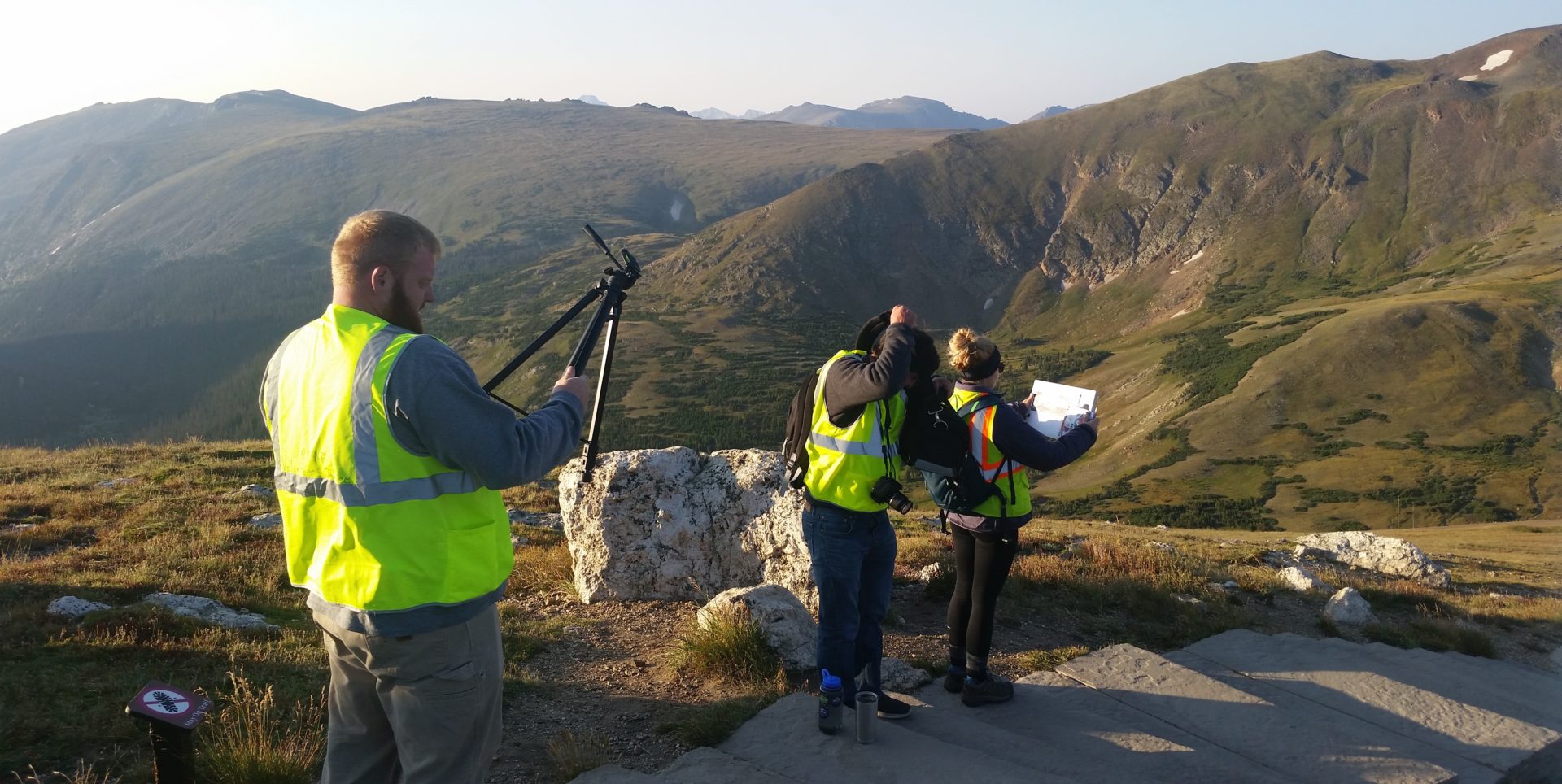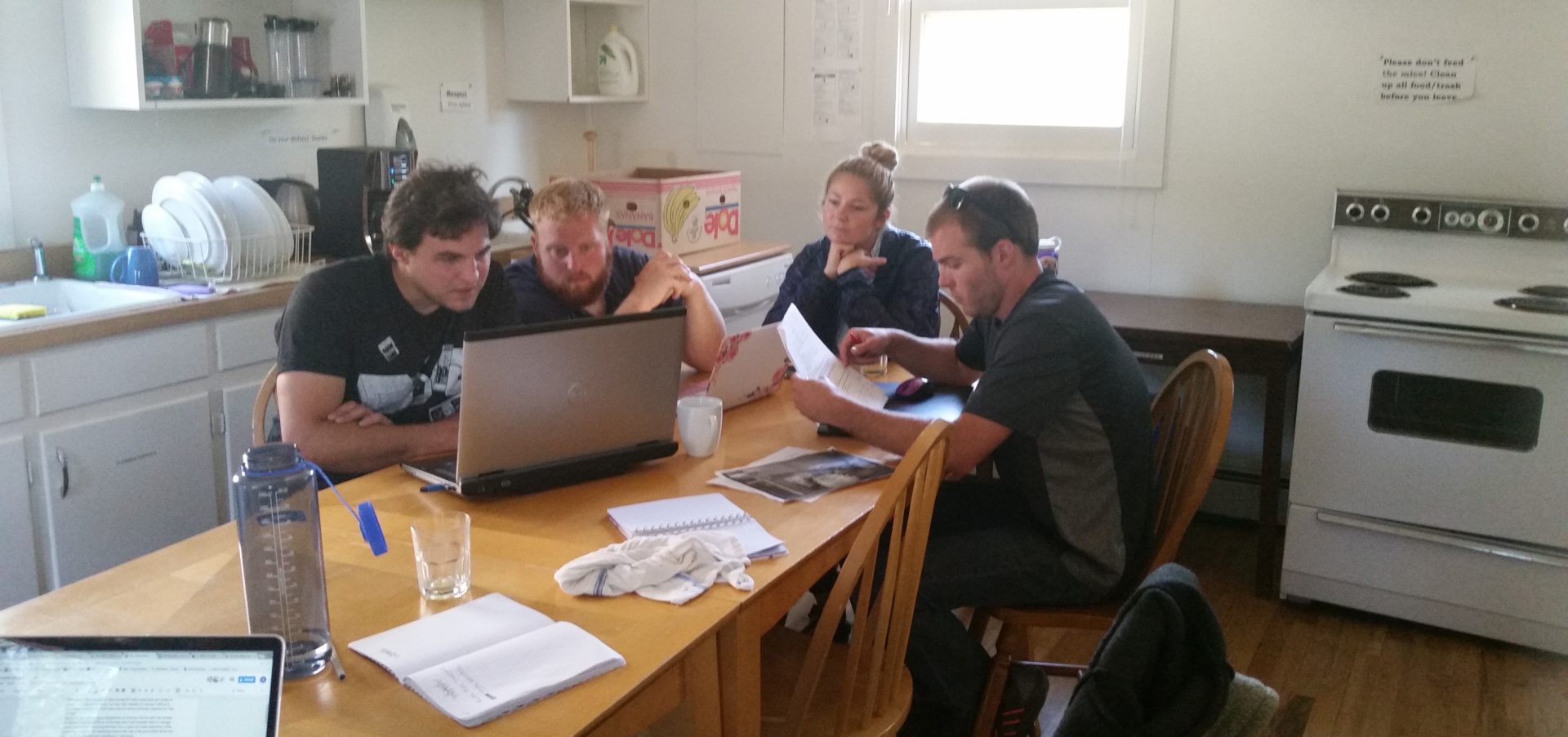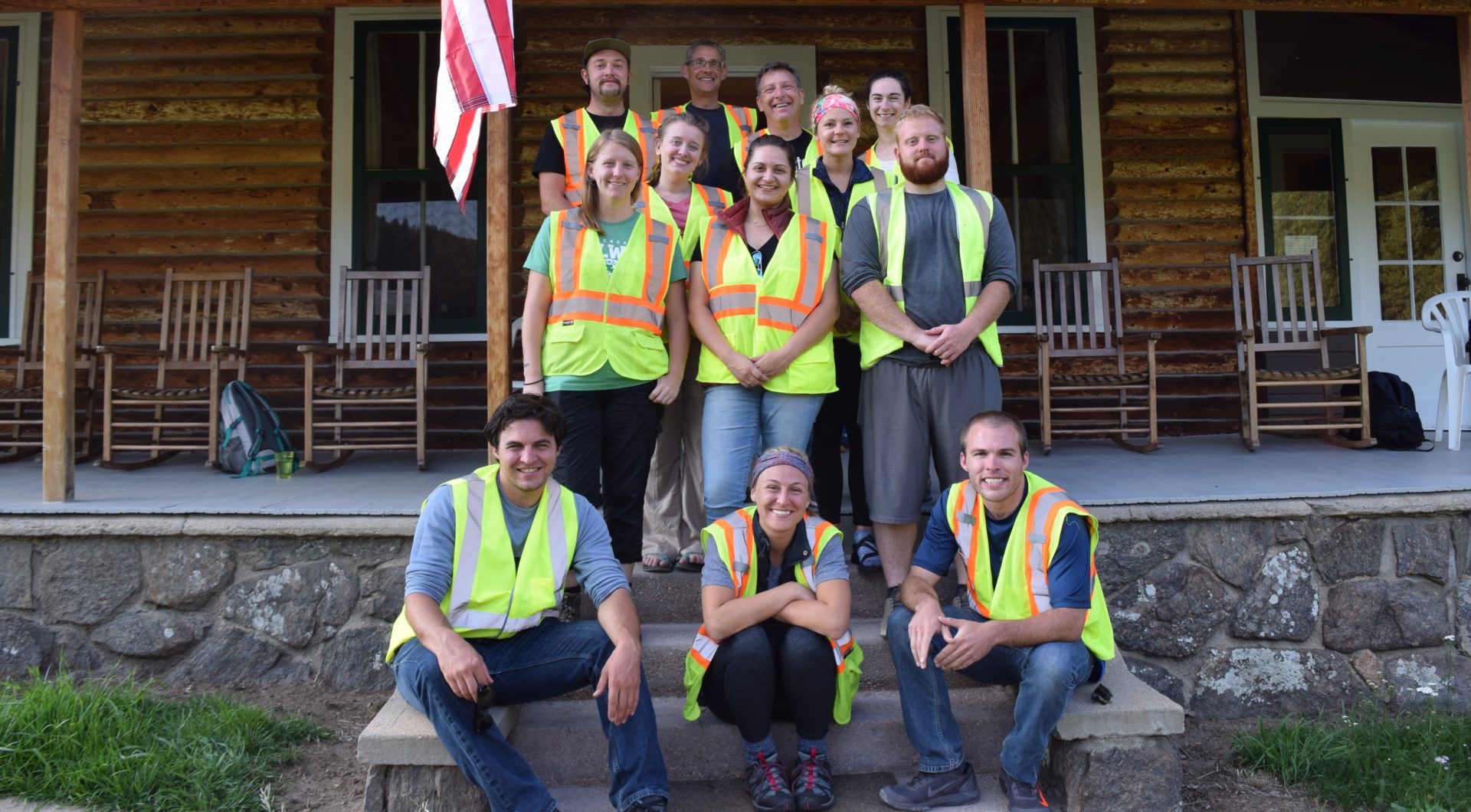One center at Colorado State University teaches graduate students in English the literary publishing process, from manuscript to final printing, while another challenges history students to apply the tools of the historian to public lands management.
When the two centers began sharing space on campus, they realized they had a ready-made collaboration: publishing a book of the history students’ essays about Rocky Mountain National Park.
The project gave the history students a taste of the publishing process — and gave the English students experience with a type of project outside their normal focus.
“This volume resulted from a happy confluence of circumstance,” history Professor Jared Orsi writes in the introduction to Long Exposures, which was published in May. “Both centers make books. The Public Lands History Center researches and writes them. The Center for Literary Publishing edits and produces them. … We decided to collaborate on an interdisciplinary project that drew upon the strengths of both centers and that provided our students training in making a book and gave them the opportunity to showcase their work.”
Both centers have been designated as Programs of Research and Scholarly Excellence by CSU’s Office of the Vice President for Research.
Orsi, director of the PLHC, joined forces with Stephanie G’Schwind, director of the CLP, shortly after the two moved their centers into the renovated historic Tiley House in spring 2018.
Parks as Portals to Learning
In August 2018, Orsi and PLHC Program Manager Ariel Schnee led a group of six grad students and two recent graduates of the Department of History on the sixth annual Parks as Portals to Learning field workshop to Rocky Mountain National Park.
The focus of the week was researching the park’s archives for old photos taken in and around two visitor centers and creating repeat photography, or “rephotography,” of them by shooting the exact same picture again in present day, so that the two can be compared. The eight students divided into two teams, with one focused on the Beaver Meadows Visitor Center and the other on the Alpine Visitor Center. After a few days of researching and photographing, the students presented their findings to park management.
“The idea is to provide the park’s staff with something of value, and also give the students an idea of what it’s like to be a park conservation manager for a week,” Orsi said. “It’s not a class paper, it’s real, and they’re asked to perform at a professional level. The students really take over; the instructors’ goal is to make ourselves unnecessary by the end of the week.”
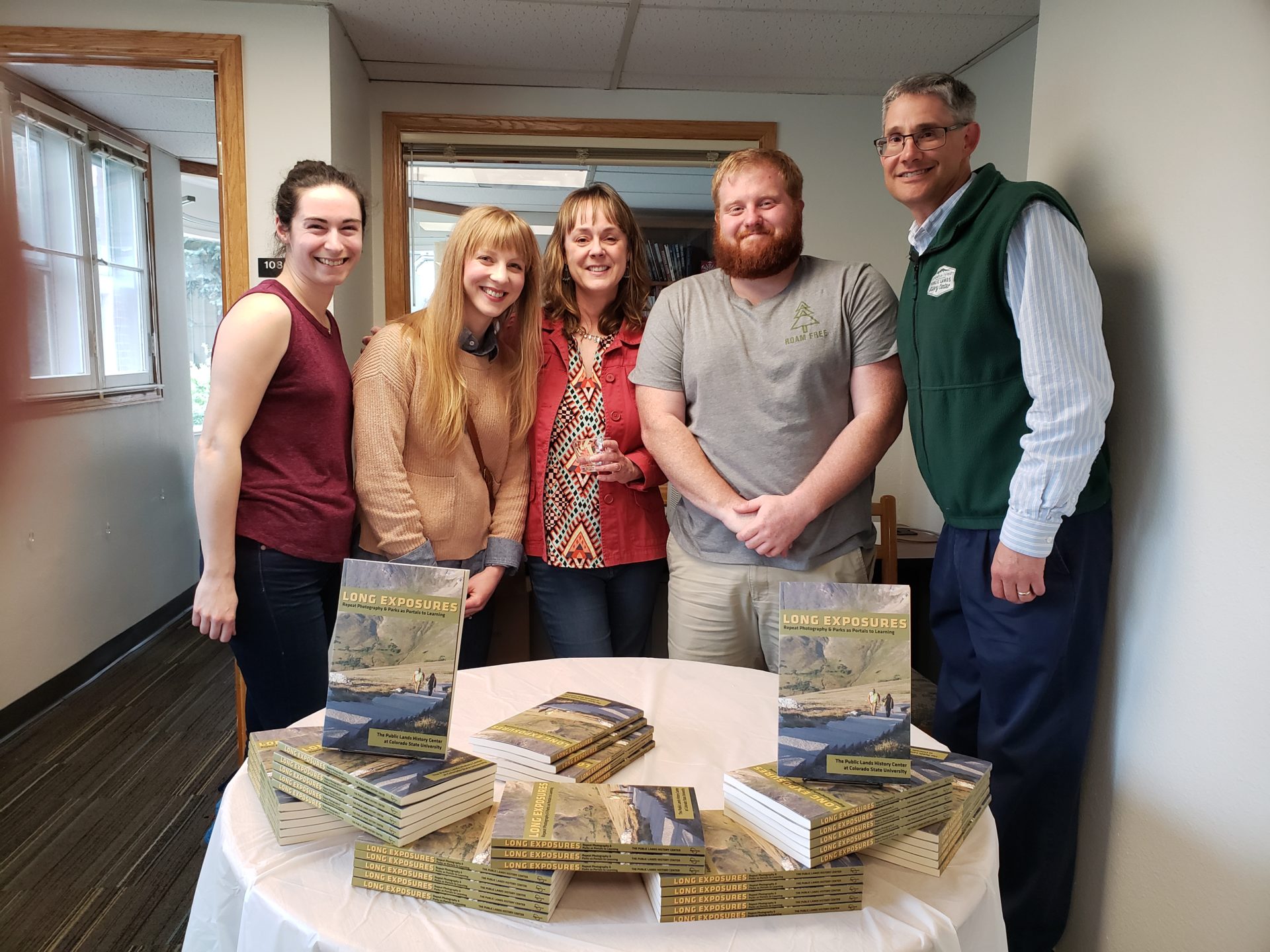
All the participants wrote essays about the park experience for Long Exposures, covering topics ranging from what can be learned from rephotography to parks’ intent in building trails compared to how they’re actually used.
“It was amazing to be part of this project,” said graduate student Andy Olson. “We were out in the world, and compared to the classroom, it’s a different experience. And now it’s great to have a finished product that looks good on a résumé and you can hand to somebody.”
Olson added that the whole experience just reinforced his desire to go into park management.
“The interaction with the park’s staff was huge for me,” he said. “It solidified that this is what I want to be doing.”
High school partner
Even a social studies teacher from Rocky Mountain High School in Fort Collins, Kurt Knierim, got in on the action, serving as a guest instructor on the field workshop and penning one of the essays in Long Exposures.
He replicated a version of the rephotography with his own classes, and students from Rocky and Berthoud High School participated in the 2019 field workshop.
Luce Foundation awards PLHC $225,000
The Henry Luce Foundation has awarded the Public Lands History Center $225,000 over three years to fund a project called “Telling Untold Stories.”
The center plans to use the funding to identify two underserved communities that have untold stories, conduct research to help those communities claim a voice, incorporate them into American West Program events, and expand the center’s Parks as Portals to Learning program.
The first American West Program event funded by the grant will feature a lecture by Kent Blansett, author of A Journey to Freedom: Richard Oakes, Alcatraz, and the Red Power Movement. His talk marks the 50th anniversary of the 1969 takeover of Alcatraz Island by the activist organization Indians of All Tribes.
The event, which will be held from 7 to 9 p.m. on Nov. 7 in the Lory Student Center North Ballroom, is free and open to the public and will be followed by a reception with an audience question-and-answer period. The event is funded in part by the Lilla B. Morgan Memorial Endowment for the Arts.
Jared Orsi, faculty director of the Public Lands History Center, said the center will replicate the Parks as Portals to Learning program at another national park. For the past seven years, it’s been based at Rocky Mountain National Park, where history students spend a week working with staff to address park management issues.
Orsi said Luce Vice President Sean Buffington became interested in the work of the PLHC when he came across the center’s website while on a visit to Colorado. The PLHC hosted a visit with Buffington in July 2018, and he encouraged them to apply for the grant.
“He was intrigued enough to stop by,” Orsi said. “I think we made a good impression.”
“The Luce Foundation seeks to make humanistic scholarship accessible to broad and diverse publics,” Buffington said. “The Public Lands History Center’s ‘Telling Untold Stories’ initiative will bring the history of America’s public lands — in all its complexity — to wider scholarly and public attention. The Luce Foundation is proud to support this project and the innovative work of the PLHC.”
Plans call for using the first year of grant funding to identify candidates to become the two community partners. All of the initiatives associated with the grant will feature significant student involvement, according to PLHC Program Manager Ariel Schnee. Additional American West Program events funded by the grant will be announced as they are scheduled.
For more information, visit publiclands.colostate.edu.
“It was a rare pleasure to be a part of the Parks as Portals to Learning book project, because it afforded me time to reflect deeply on the meaningful learnings gleaned from the week at Rocky Mountain National Park,” Knierem said. “As I wrote the chapter, I was not only allowed the luxury of professional reflection, but was challenged to improve my teaching.”
Once their essays were written, the entire group came back together in late 2018 to read and discuss their pieces in a workshop setting. Each author was required to refer to at least three of their co-authors’ essays, Orsi said, “so the chapters are in conversation with each other.”
Then the manuscripts went to G’Schwind’s crew in the Center for Literary Publishing, most of whom are graduate students in creative writing who produce Colorado Review, a national literary journal, and other publications.
“My interns are used to editing creative nonfiction, but editing scholarly writing is a bit of a departure,” G’Schwind said. “So these two groups of graduate students got to work with each other, copyeditors meeting with authors to discuss proposed changes to the text.”
‘Valuable experience’
After her editorial team members fact-checked and finalized the manuscripts, CLP intern Susannah Lodge-Rigal, the book’s typesetter, flowed in the text before a final round of proofs went to Orsi and Schnee for review. After Long Exposures was published, the two centers held a celebratory reception on May 21, exactly one year after they moved into the Tiley House. They even created a story map about the project.
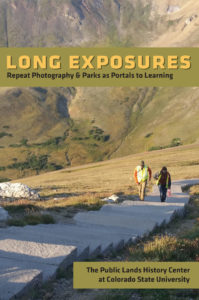 “Copyediting Long Exposures provided me with valuable experience in professional publishing and editing,” said third-year creative writing grad student Kelly Weber, who worked with Olson on his essay. “To be part of such work has been an honor and richly educational in both publishing skills and the environmental literacy that CSU promotes as a land-grant institution.”
“Copyediting Long Exposures provided me with valuable experience in professional publishing and editing,” said third-year creative writing grad student Kelly Weber, who worked with Olson on his essay. “To be part of such work has been an honor and richly educational in both publishing skills and the environmental literacy that CSU promotes as a land-grant institution.”
“Working with the PLHC and the CLP to publish Long Exposures has been an incredible opportunity,” added author Daniel Gilbert, a recent graduate of the history department and a first-year master’s student in history. “It has provided hands-on experience in the process of writing and publishing something of my own. This has not only helped to improve my writing, but has also given me some valuable insights into the inner workings of the publishing process.”
“My time on the production team of Long Exposures has taught me the extensive nature of fact-checking, the importance of communication between a production team and its authors, and the true companionship that undergirds the book publishing process,” said Kristin Macintyre, a third-year grad student in creative writing. “I am grateful and proud to be a part of this collaborative effort and will surely take this experience with me as I look forward to future opportunities to work in the publishing field, both as an author and an editor.”
The Long Exposures project received financial support from the Department of History, College of Liberal Arts dean’s office and the Office of the Provost. It is available online through the open-access network Mountain Scholar.
